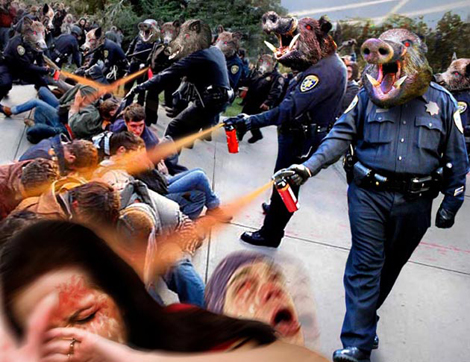
By Keith Johnson
A recently leaked Department of Homeland Security (DHS) document from October 2011 reveals that federal law enforcement officials have been keeping tabs on the Occupy Wall Street movement from its inception. Coordinated responses from local and state law enforcement agencies claim that the ongoing protests taking place in cities across the United States could soon turn ugly.
“Mass gatherings associated with public protest movements can have disruptive effects on transportation, commercial and government services, especially when staged in major metropolitan areas,” claims a report, entitled “Special Coverage: Occupy Wall Street,” issued by DHS. “Large-scale demonstrations also carry the potential for violence, presenting a significant challenge for law enforcement.”
The protests, which began with 12 participants in New York City on September 17, 2011, have now spread to every major city in America. The single largest protest occurred on October 5, 2011 in New York City and attracted a crowd of 15,000 demonstrators who marched on Wall Street and the New York Stock Exchange.
In reality, peaceful anti-Wall Street protests have occasionally turned violent not because of the protesters but as a result of heavy-handed police efforts to shut down the demonstration sites.
In just under six months since the protests began, dozens of major confrontations have been reported across the nation, the majority of which were either provoked or instigated by police. The pepper spraying of seated protesters at University of California Davis and the critical wounding of an Iraq war veteran in Oakland, California are two examples.
The DHS report went on to say: “While the peaceful nature of the protests has served so far to mitigate their impact, larger numbers and support from groups such as Anonymous substantially increase the risk for potential incidents and enhance the potential security risk to critical infrastructure.”
This isn’t the first time DHS identified an anonymous group of computer hackers who target banks, multinational corporations and U.S. government agencies as a potential threat to critical infrastructure like power plants, electrical grids and water treatment facilities. In a September 17, 2011 bulletin, DHS warned, “experienced and skilled members of Anonymous in hacking could be able to develop capabilities to gain access and trespass on control system networks very quickly.”

Keith Johnson is a writer based in Tennessee. He can be contacted at [email protected].

